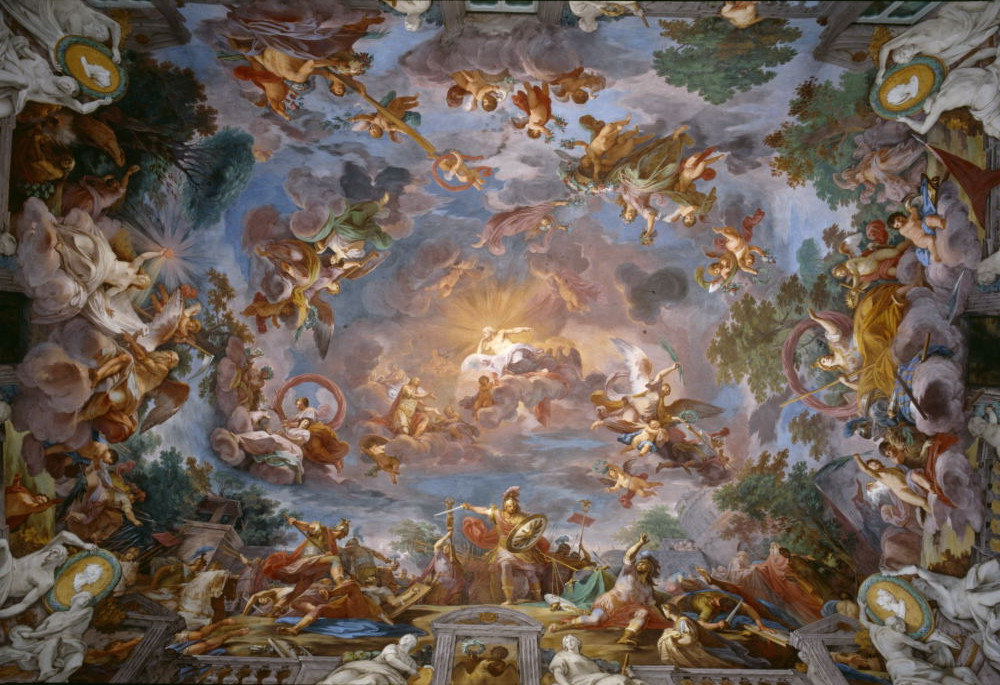
MARIANO ROSSI HALL
Entrance Hall
Imposing because of its size, the sumptuousness of its decoration, and the monumental sculptures it hosts, the hall ushers the visitor onto the itinerary through the Museum.
The dominant feature is the ceiling by Mariano Rossi (1731-1807), executed between 1775 and 1779 as part of the renovation of the building commissioned by Prince Marcantonio Borghese IV and directed by the architect Antonio Asprucci (1723-1808).
The subject celebrates Roman civilization and the heroic virtue of honour. In the centre is the depiction of Romulus welcomed to Olympus by Jupiter to propitiate the victory of Furius Camillus against Brennus, king of the Gauls. The choice of the subject is also connected with the birth, on 8 August 1775, of Marcantonio IV’s first son, Camillo, who was to marry Pauline, Napoleon’s sister. Portrayed around the main motif are Justice, Loyalty, and Honour, which triumph thanks to the action of time over the vices (Slander, Deceit, and Falseness), the Fame of Rome and its Victories (alluded to by the episodes on the margins of the long side of the ceiling).
The decorations of the walls with painted floral and animal motifs and the stucco cameos were executed by a large team of artists, including Vincenzo Pacetti (1746-1820), Massimiliano Laboureur (1767-1831), and Tommaso Righi (1727-1802).
At the time of Cardinal Scipione Borghese (1577-1633), who commissioned the villa, the group with Marcus Curtius leaping into the chasm in the Forum to save the Roman people – consisting of an ancient horse (2nd century CE) and a rider by Pietro Bernini (1618) – was outside the building, on the façade facing Porta Pinciana. In 1776, however, the architect Antonio Asprucci had it moved to high up on the wall across from the entrance.
Also during the 18th-century renovation, the busts of the Twelve Caesars by Giovan Battista della Porta (1542-1597) were placed in the niches at the top of the walls, while in the 19th century the sculptures portraying Bacchus (2nd century CE) and the colossal Fighting Satyr with a twisting body (120-140 CE) were displayed, the latter of which was already owned by the cardinal and inspired Gian Lorenzo Bernini (1598-1680) in the execution of his David. In the same century the floor was embellished with the insertion of the Mosaic with scenes of hunting and of gladiators fighting wild animals (beginning of the 4th century CE), which was found on the Borghese estate at Torrenova on the via Casilina, where it had decorated an ancient Roman villa.